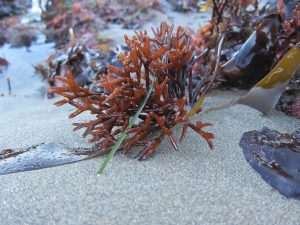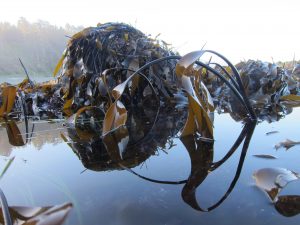FHL 446 | Summer A 2018
Marine Botany: Diversity and Ecology
The theme of the course is principles, methods, and applications of marine algal biodiversity studies with a focus on the macroalgae of marine benthic environments.
Students will learn classical and contemporary methods for the identification, classification, and phylogenetic analysis of marine benthic algae (seaweeds); the theories underlying the methods, and the application of biodiversity information in (for example) benthic ecology. They will gain practical experience in such tools as: specimen collection, preservation, microscopy, DNA isolation and sequencing, computational approaches to phylogeny reconstruction, DNA barcoding, and databasing. Fieldwork will be extensive, as the diverse and species-rich habitats around San Juan Island provide ideal sites for the examination of macroalgal diversity.
Students will conduct individual research projects using morphological, ecological and molecular data to assess the diversity of algal populations and to interpret that diversity in its ecological and biogeographic context. The class will also continue to populate the “Marine Algae of the San Juan Islands” BOLD system database project and publish a new public dataset for the project.
This is a course appropriate for advanced undergraduate and graduate students, as well as, professional marine biologists, botanists, geneticists, and oceanographers with interests in marine biodiversity, conservation biology, and coastal ecology. Course participants will leave with a toolbox of methods to assess these topics in any nearshore ecosystem in the world.
Students receive 9 (quarter system) or 6 (semester system) transfer credits for the course.
There are FHL financial aid opportunities for those students who can demonstrate financial need or academic merit.
Funding to attend the course may also be available from the Phycological Society of America’s Croasdale Fellowship and the British Phycological Society.


